Fungal infections affect the skin through conditions like athlete’s foot, jock itch, and ringworm. These conditions are still easily visible and commonly observed. However, there do exist fungal infections which affect your nails as well, which are equally severe. In fact, a fungal infection is the most common infection of the nails, leading to around 50% of nail abnormalities.
Also called tinea unguis and onychomycosis, this condition can damage your nails and may even infect your skin in other parts of the body. Thus, it is important to know the signs of a fungal infection and get it treated as early as possible.
Keep reading to learn what nail fungus is, what are its causes, and what you can do to keep these infections at bay.
What Is Fungal Infection of the Nail?
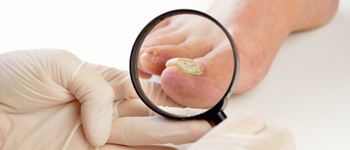
Fungal infections are contagious. They are also more common in toenails than on fingernails and grow in areas where sweat accumulates the most. But do you know how a nail fungus happens in the first place? Let’s find out.
How Does a Fungal Nail Infection Happen?
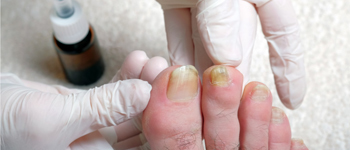
In many cases, the fungi that live on our skin can turn rogue and cause a nail infection, especially when your body’s immunity reduces. People who wear closed footwear for a long time are most at risk of developing this infection.
The most common species of fungus that causes a nail infection is the dermatophytes like Candida. Other common species of fungi that can cause nail infections include:
- Trichophyton Rubrum
- Trichophyton Interdigitale
- Epidermophyton Floccosum
- Trichophyton Violaceum
- Microsporum Gypseum
- Trichophyton Tonsurans
- Trichophyton Soudanense
Types of Nail Fungus Infection
Fungal infections of the nails can be of four different types. These include:
- Distal Subfungal Infections
These are the most common type of fungal infections affecting the nails. These can occur on the toenails as well as fingernails and give the outer edge of the nail a jagged appearance. You may also notice whitish or yellowish streaks across the infected nail. The fungus invades the nail bed and the part under the nail.
- Proximal Subfungal Infections
Though this type of fungal infection can affect both the toenails and fingernails, proximal sub-fungal infections are rare. The infection begins as yellow spots at the base of the nail and spreads upwards.This infection is more commonly seen in immunocompromised individuals (people with weakened immunity. In some cases, it can arise following a nail injury.
- White Superficial Infections
This type of fungal infection affects the toenails. The fungus that causes this infection attacks the upper layers of the nail and creates well-defined white spots on the nail. This is the fungus eating away into the nail, which eventually results in rough, soft, and crumbling nails.The white patches on the nail may begin small but eventually cover the entire part of it. These spots can also become pitted and flaky.
- Candida Infection
Caused by a fungus called Candida, this type of infection affects nails that were previously injured or infected and has an affinity for fingernails. Candida nail infection is also more common in people who frequently soak their hands in soap or water.In the initial stages, the infections start around the nail cuticle. As the infection progresses, the nail cuticle becomes red and swollen and often tender or painful to touch. The nail may be brittle and, in many cases, falls off by itself.
Symptoms of Nail Fungus Infection
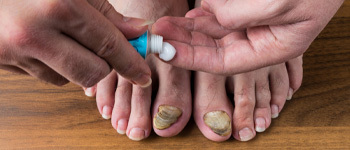
- Distorted or abnormal-looking nail
- Brittle or thickened nail
- Nail that may be lifted from the nail bed
- A bad odour emanating from the nail
- Flaky or brittle nature of the nail
- Whitening or yellowing of the nail
Treatment for Nail Fungus Infection
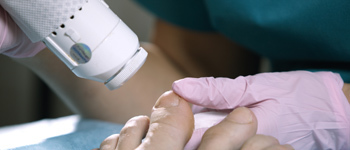
- Oral antifungal medications such as terbinafine, fluconazole, and griseofulvin.
- Antifungal nail lacquers
- Topical antifungal solutions
Another method for treating fungal infections is laser or photodynamic therapy. In this treatment, light-activated agents are applied to the nail to destroy the fungus.
Your doctor may need to perform nail removal surgery if you have a severe fungal infection.
How To Prevent a Fungus Infection of the Nail

- Always wash your hands if you have touched an infected nail. You can get a fungal infection if you come in contact with someone who has it.
- Since the fungus thrives in a moist environment, it is a good practice to dry your hands and feet properly after washing them.
- Minimize wearing socks and closed footwear for prolonged periods of time. Allow the skin on your feet to breathe from time to time.
- Ensure your manicure and pedicure are being done using clean, sanitized, and hygienic equipment.
- Be sure to protect your feet when visiting public showers.
- Avoid sharing nail cutters, files, and other nail tools.
- Limit your usage of artificial nail polishes and nail paints.
Conclusion
Nails are an important part of our hands and feet. While we take good care of our skin and hair, we must also ensure our nails are healthy and disease-free.

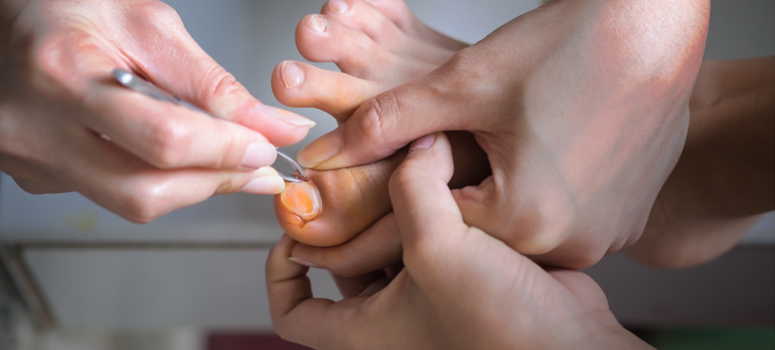
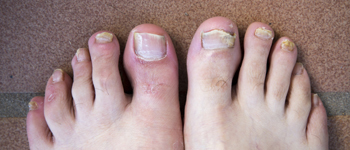 These are the most common type of fungal infections affecting the nails. These can occur on the toenails as well as fingernails and give the outer edge of the nail a jagged appearance. You may also notice whitish or yellowish streaks across the infected nail. The fungus invades the nail bed and the part under the nail.
These are the most common type of fungal infections affecting the nails. These can occur on the toenails as well as fingernails and give the outer edge of the nail a jagged appearance. You may also notice whitish or yellowish streaks across the infected nail. The fungus invades the nail bed and the part under the nail.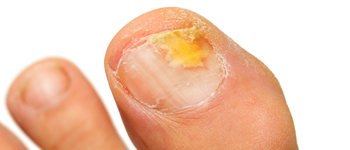 Though this type of fungal infection can affect both the toenails and fingernails, proximal sub-fungal infections are rare. The infection begins as yellow spots at the base of the nail and spreads upwards.This infection is more commonly seen in immunocompromised individuals (people with weakened immunity. In some cases, it can arise following a nail injury.
Though this type of fungal infection can affect both the toenails and fingernails, proximal sub-fungal infections are rare. The infection begins as yellow spots at the base of the nail and spreads upwards.This infection is more commonly seen in immunocompromised individuals (people with weakened immunity. In some cases, it can arise following a nail injury. This type of fungal infection affects the toenails. The fungus that causes this infection attacks the upper layers of the nail and creates well-defined white spots on the nail. This is the fungus eating away into the nail, which eventually results in rough, soft, and crumbling nails.The white patches on the nail may begin small but eventually cover the entire part of it. These spots can also become pitted and flaky.
This type of fungal infection affects the toenails. The fungus that causes this infection attacks the upper layers of the nail and creates well-defined white spots on the nail. This is the fungus eating away into the nail, which eventually results in rough, soft, and crumbling nails.The white patches on the nail may begin small but eventually cover the entire part of it. These spots can also become pitted and flaky. Caused by a fungus called Candida, this type of infection affects nails that were previously injured or infected and has an affinity for fingernails. Candida nail infection is also more common in people who frequently soak their hands in soap or water.In the initial stages, the infections start around the nail cuticle. As the infection progresses, the nail cuticle becomes red and swollen and often tender or painful to touch. The nail may be brittle and, in many cases, falls off by itself.
Caused by a fungus called Candida, this type of infection affects nails that were previously injured or infected and has an affinity for fingernails. Candida nail infection is also more common in people who frequently soak their hands in soap or water.In the initial stages, the infections start around the nail cuticle. As the infection progresses, the nail cuticle becomes red and swollen and often tender or painful to touch. The nail may be brittle and, in many cases, falls off by itself.











